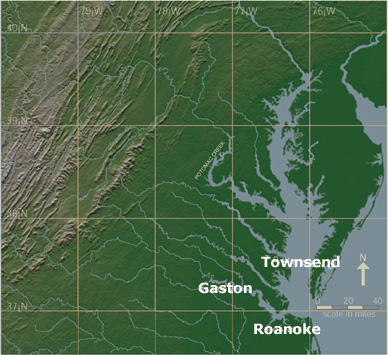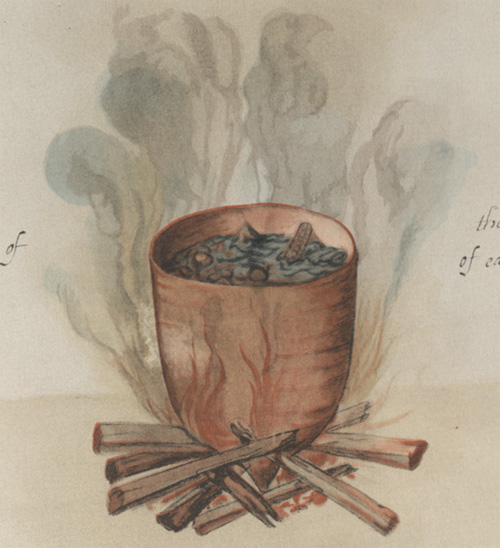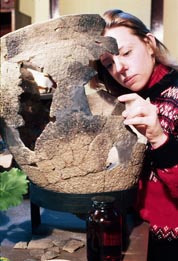
 |
| Overview | Site Context | Examine the Site | Timeline |
Paspahegh - Artifacts - CeramicsThe Late Woodland/Early Contact period ceramic assemblage is dominated by shell-tempered ceramics with simple stamped surfaces, known as Roanoke Simple Stamped. Ceramics with shell-tempered, fabric-marked surfaces (known as Rappahannock Fabric Impressed, a Townsend ware) and rock-tempered, simple stamped ceramics (comparable to Gaston wares) are also found in very small percentages.Roanoke ceramics are the major Late Woodland ceramic type found along the lower James, and Townsend and Gaston wares would have been available to the residents of 44JC308 through trade with settlements immediately north and upstream of the site, respectively. |
View table of artifact frequencies  Larger version of map |
|
Although few large sherds remained at 44JC308 after hundreds of years of plowing, a small sample of sherds found in postholes and burials at the site suggests that the most widely used ceramic vessel was a jar with a straight or slightly flared rim and a rounded, conical base. Whole specimens of comparable jars have been recovered elsewhere in the James River drainage.
At 44JC308, the fragments recovered indicate that a range of sizes were in use, from jars just 12 cm in diameter, to much larger vessels likely as large as that pictured in White's watercolor, "Cooking in a Pot," depicting a vessel containing liquid, corn, and perhaps fish sitting atop a fire. Harriot described how the Roanoke Algonquians cooked in these vessels and described the vessels in glowing terms, noting that they were made "with fpecial Cunning...fo large and fine, that our potters with lhoye wheles can make noe better." View full text of "A briefe and true report" by Thomas Hariot, 1588 |

Portion of the watercolor drawing "Cooking in a Pot" by John White (created 1585-1586). Licensed by the Trustees of the British Museum. © Copyright the British Museum. 
(from Virginia Department of Historic Resources) |